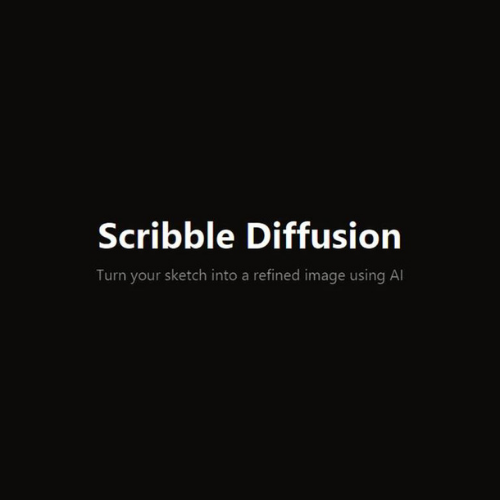Mastering Scribble Diffusion: A Comprehensive Guide Introduction to Scribble Diffusion Scribble diffusion is a fascinating process that merg...
Mastering Scribble Diffusion: A Comprehensive Guide
Introduction to Scribble Diffusion
Scribble diffusion is a fascinating process that merges creativity with technology, transforming simple sketches into elaborate digital art. This method leverages advanced algorithms and artificial intelligence to enhance and expand initial doodles into detailed, artistic renditions. Understanding the intricacies of this process can empower artists, designers, and technologists to explore new realms of digital creativity.
The Science Behind Scribble Diffusion
Understanding Diffusion Models
Diffusion models are a class of generative models used to create data samples similar to a given dataset. In the context of scribble diffusion, these models take initial, often rudimentary, sketches and generate more complex images by iteratively refining and adding details.
Key Algorithms in Scribble Diffusion
Noise Addition and Removal: The process begins by adding noise to the initial sketch, making it less recognizable. The model then learns to reverse this process, gradually removing noise and enhancing features.
Variational Inference: This technique allows the model to approximate the probability distribution of the detailed image, ensuring that each iteration produces a more refined output.
Score Matching: This approach helps the model understand the gradients of the data distribution, guiding it to make more accurate predictions at each step.
Applications of Scribble Diffusion
Enhancing Artistic Creativity
Scribble diffusion serves as a powerful tool for artists, allowing them to expand their creative horizons. By starting with a simple sketch, artists can use diffusion models to explore various styles and complexities that would be difficult to achieve manually.
Advancing Design Prototyping
In design, scribble diffusion aids in the rapid prototyping of ideas. Designers can quickly generate multiple iterations of a concept, refining it until it meets the desired specifications. This accelerates the design process and fosters innovation.
Educational Tools
Educators can leverage scribble diffusion to teach concepts of art, technology, and artificial intelligence. Students can learn about algorithmic thinking while engaging in creative exercises, making the learning process both fun and informative.
Implementing Scribble Diffusion
Tools and Platforms
Several tools and platforms facilitate the implementation of scribble diffusion. These include:
DeepArt: An AI-based tool that transforms sketches into detailed artworks.
Artbreeder: A collaborative platform that uses generative adversarial networks (GANs) to evolve images.
Runway ML: Provides various machine learning tools for creative projects, including diffusion models.
Step-by-Step Guide
Initial Sketch Creation: Start with a simple, hand-drawn sketch or a digital outline.
Model Selection: Choose a diffusion model suitable for your project. Platforms like Runway ML offer pre-trained models that can be fine-tuned.
Parameter Tuning: Adjust parameters such as noise levels, iteration count, and style preferences to tailor the output.
Iteration and Refinement: Run the model iteratively, refining the output at each step until the desired level of detail and style is achieved.
Final Touches: Use image editing software to make any final adjustments and enhancements.
Challenges and Future Directions
Addressing Technical Limitations
Despite its potential, scribble diffusion faces several technical challenges. These include managing computational resources, dealing with high-dimensional data, and ensuring consistency across iterations. Ongoing research aims to optimize algorithms and improve efficiency.
Expanding Creative Boundaries
Future advancements in AI and machine learning will continue to push the boundaries of what scribble diffusion can achieve. Enhanced models will offer even greater detail and stylistic diversity, opening up new possibilities for artists and designers.
Ethical Considerations
As with any technology, ethical considerations are paramount. Ensuring that AI-generated art respects intellectual property rights and avoids biases is crucial. Transparent and responsible use of diffusion models will help maintain the integrity of creative processes.
Conclusion
Scribble diffusion represents a convergence of art and technology, providing innovative ways to transform simple sketches into intricate digital art. By understanding the underlying algorithms and exploring practical applications, we can harness the full potential of this remarkable process. As technology evolves, so too will the possibilities for artistic expression and design, driven by the power of scribble diffusion.











No comments